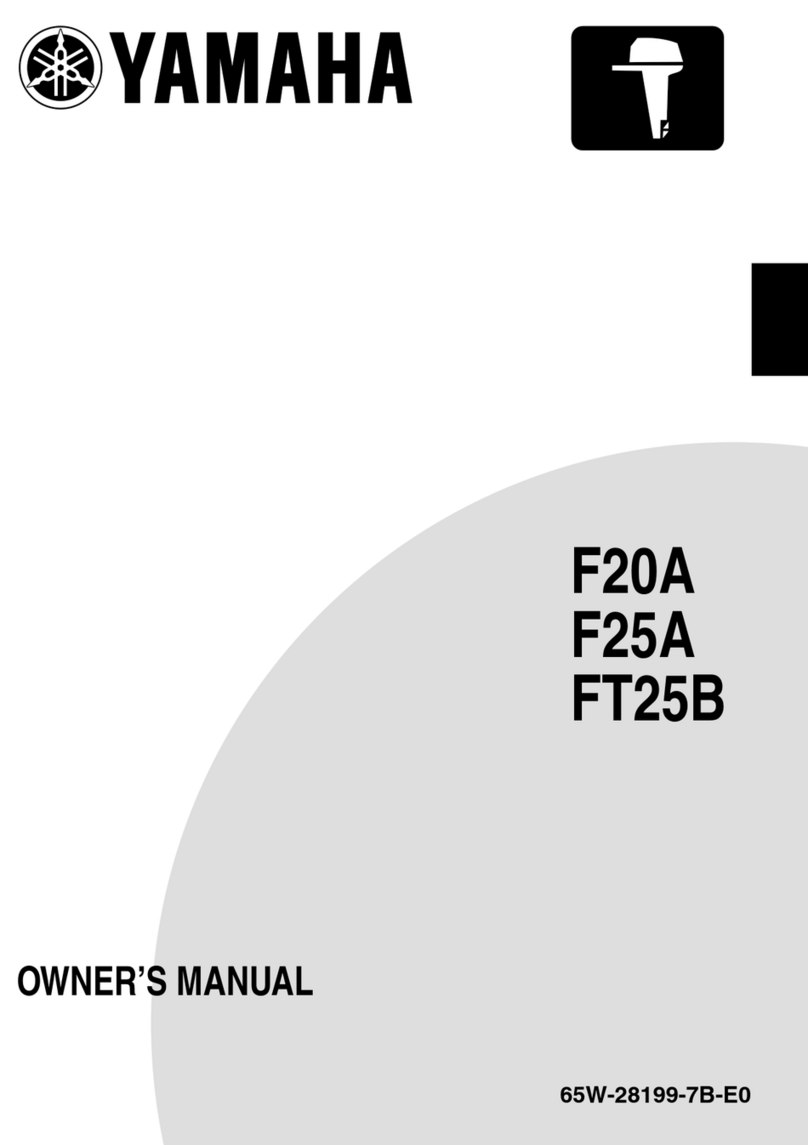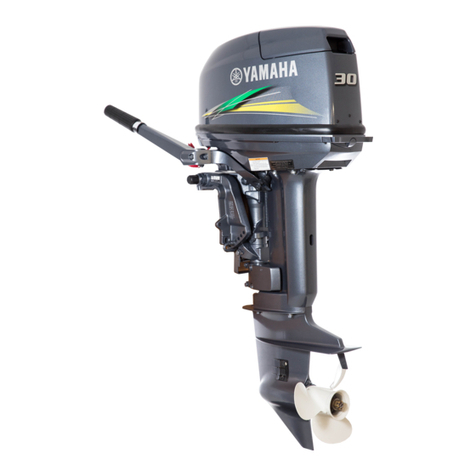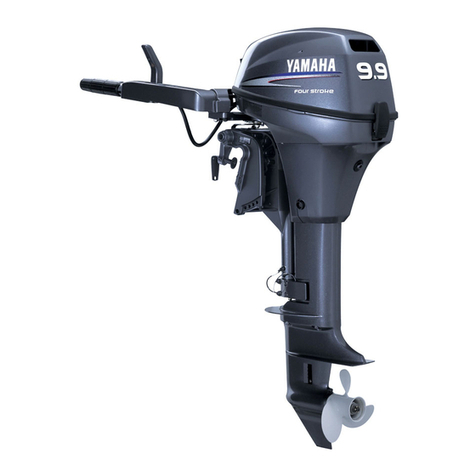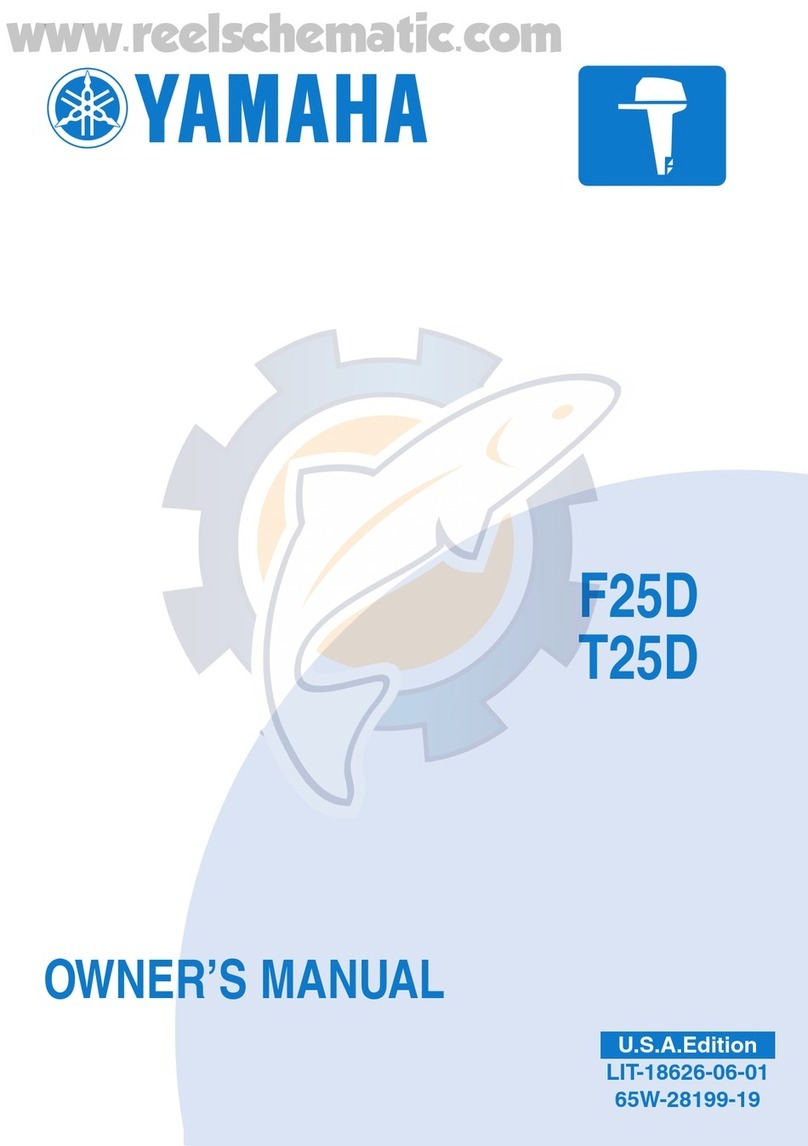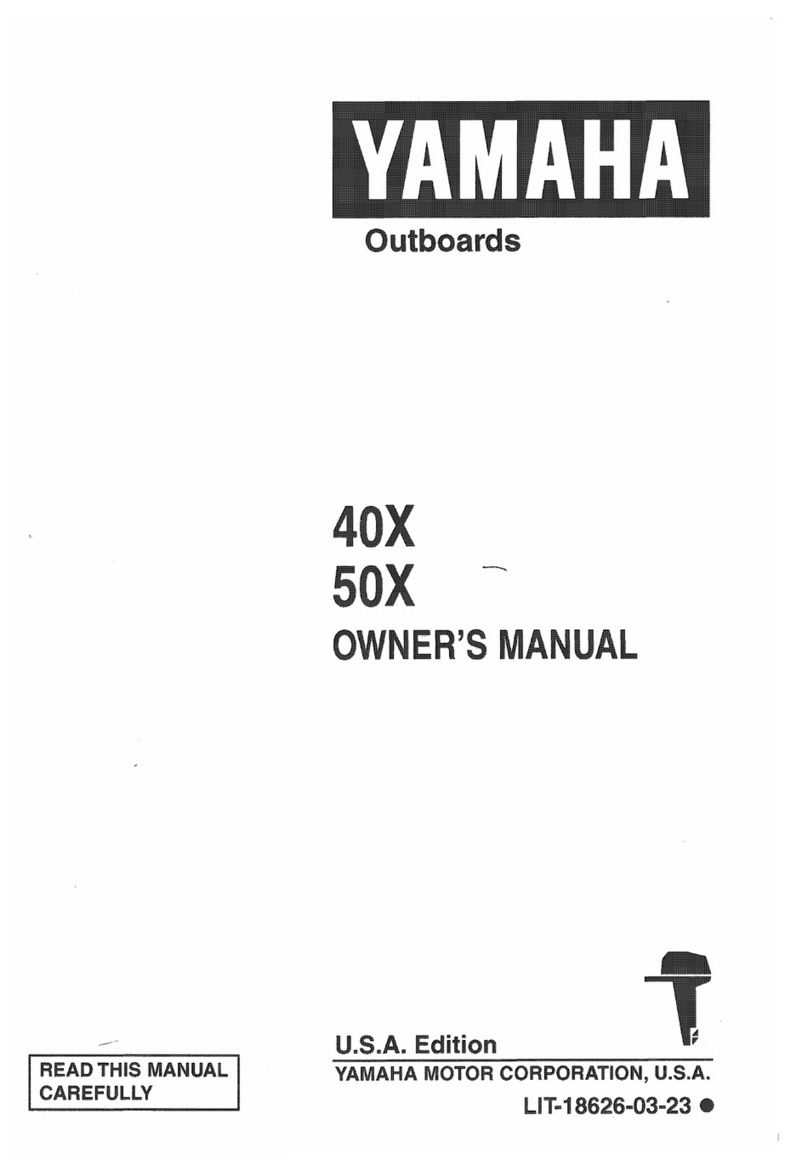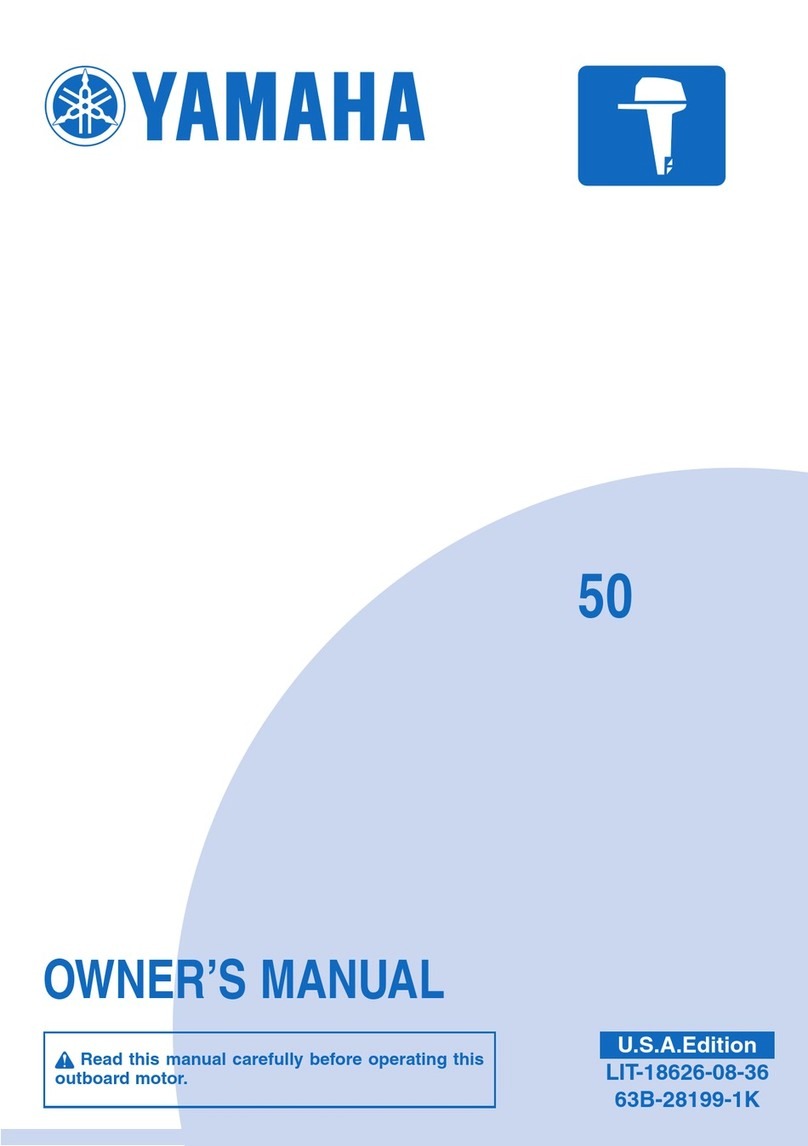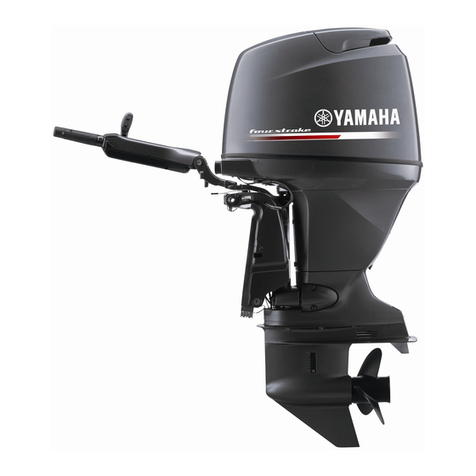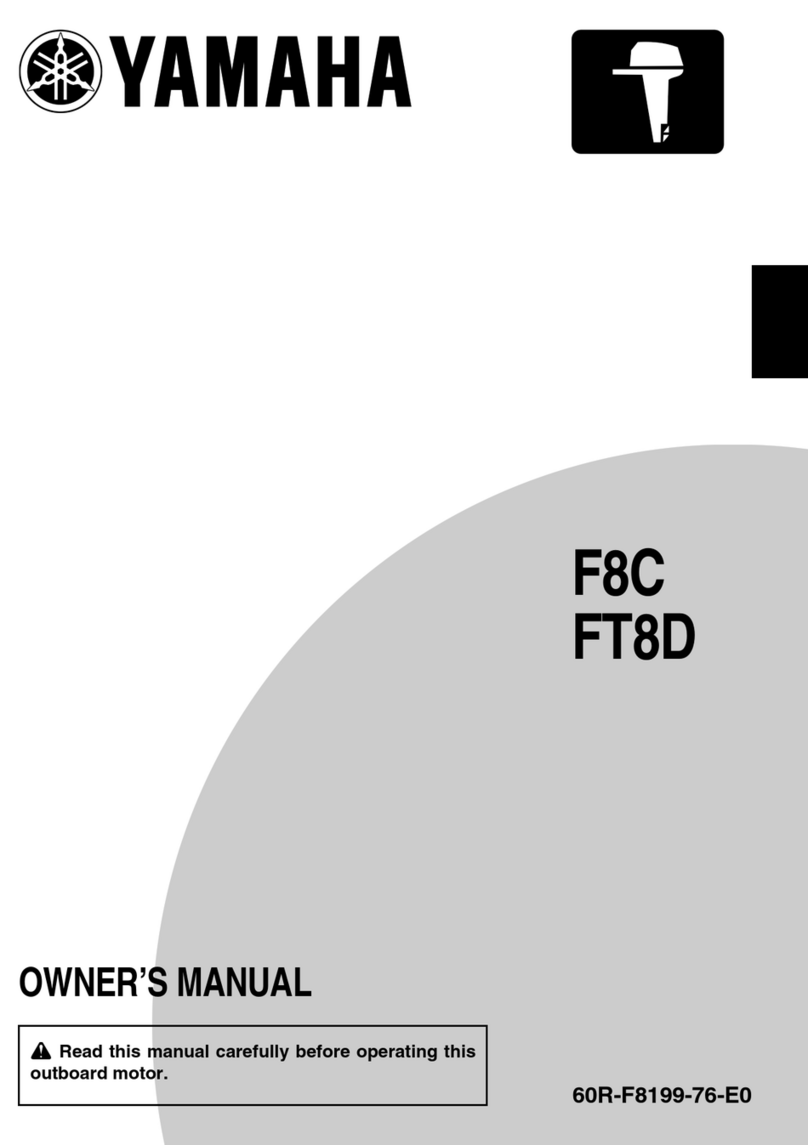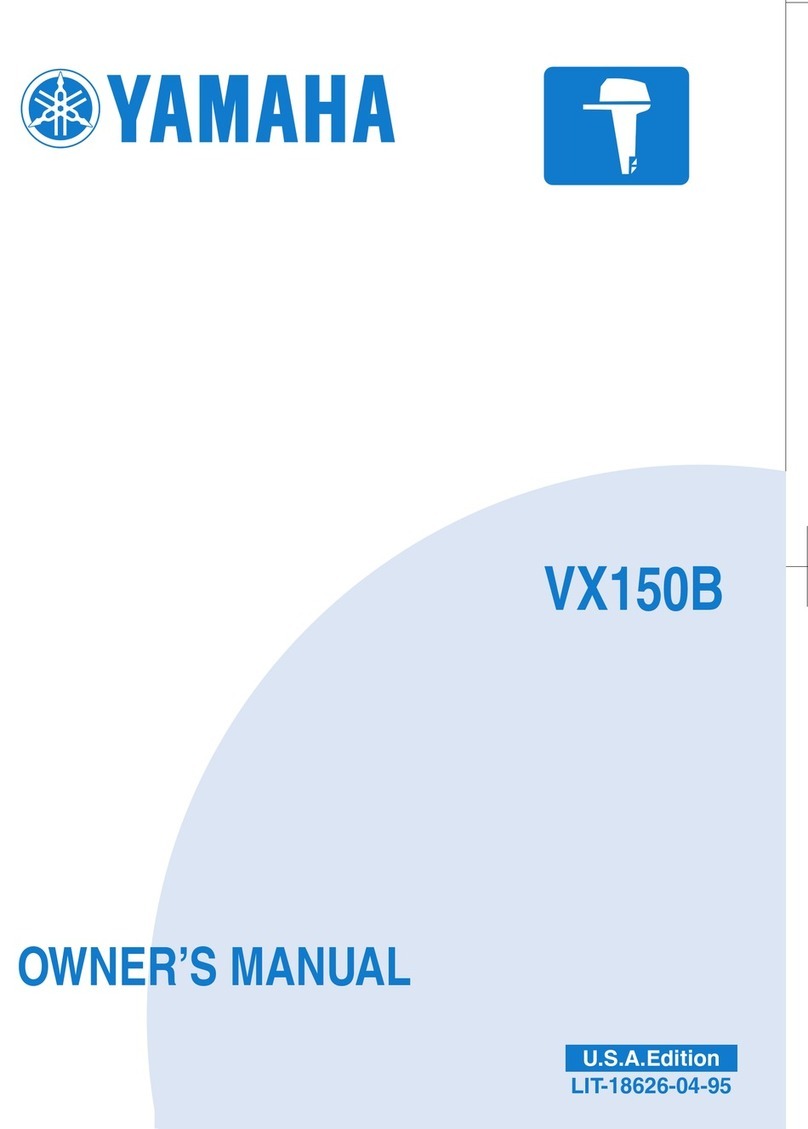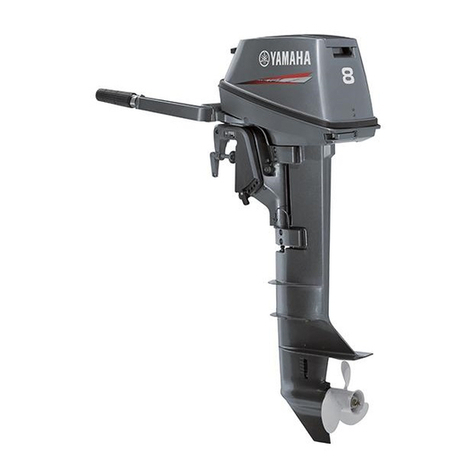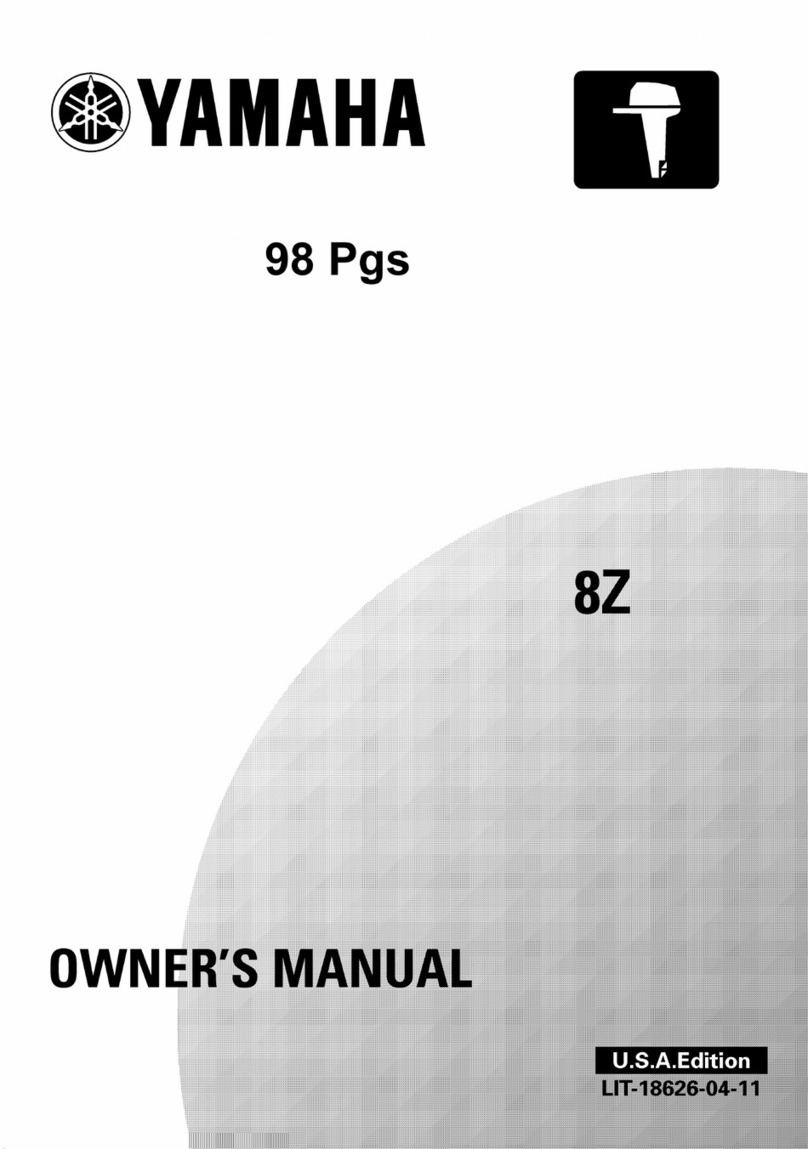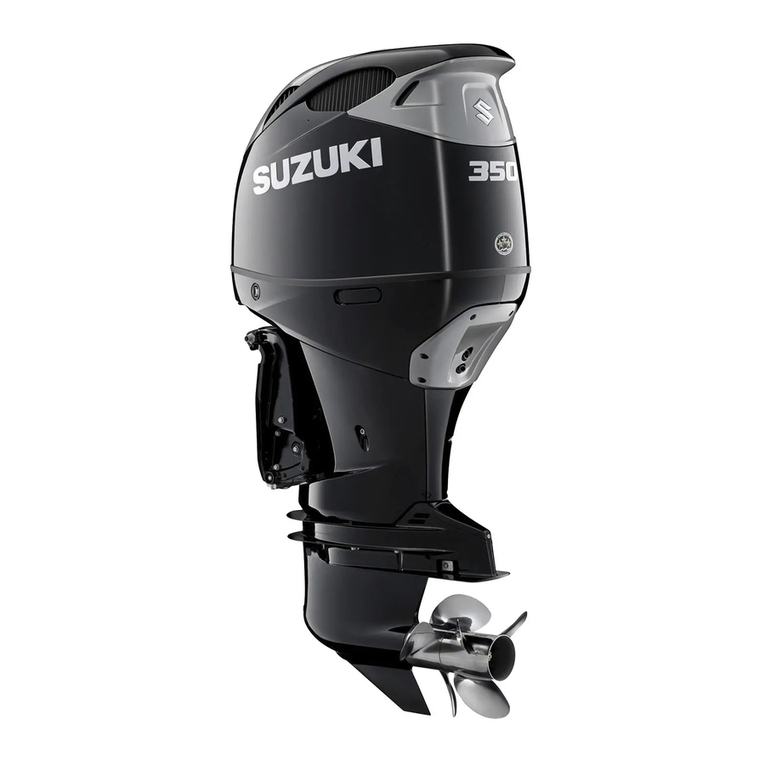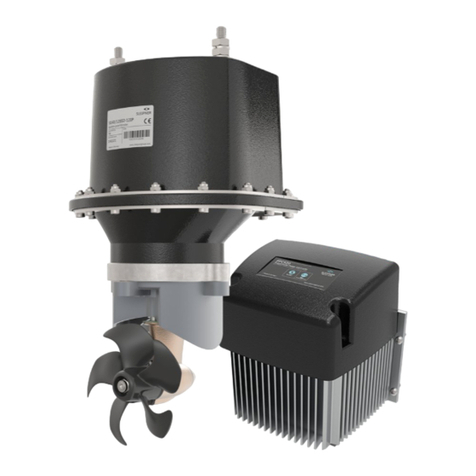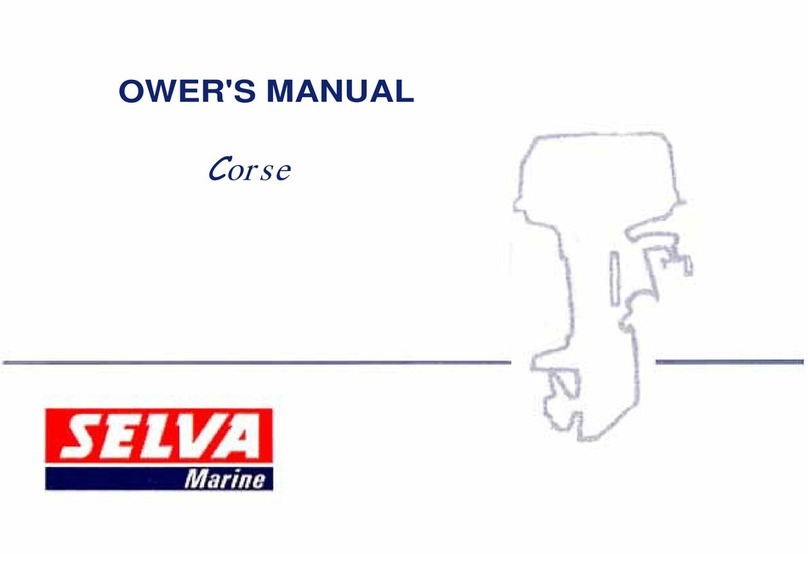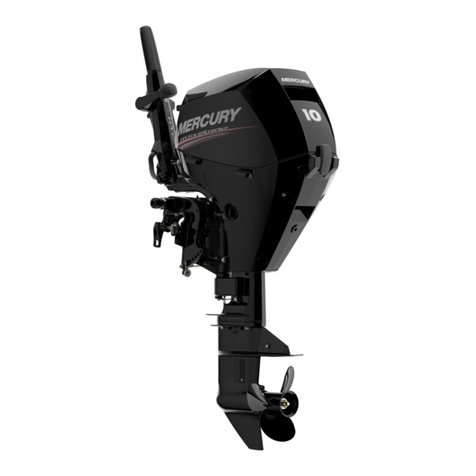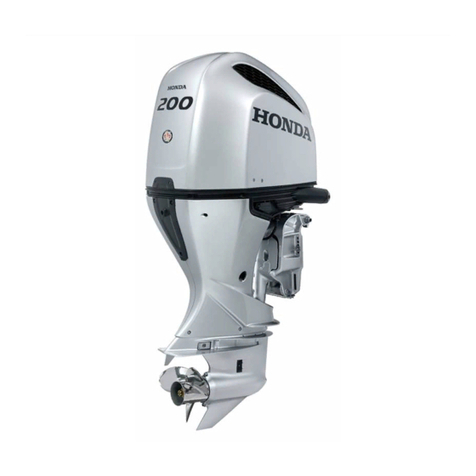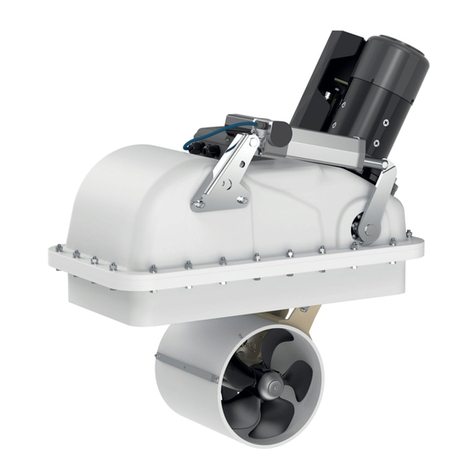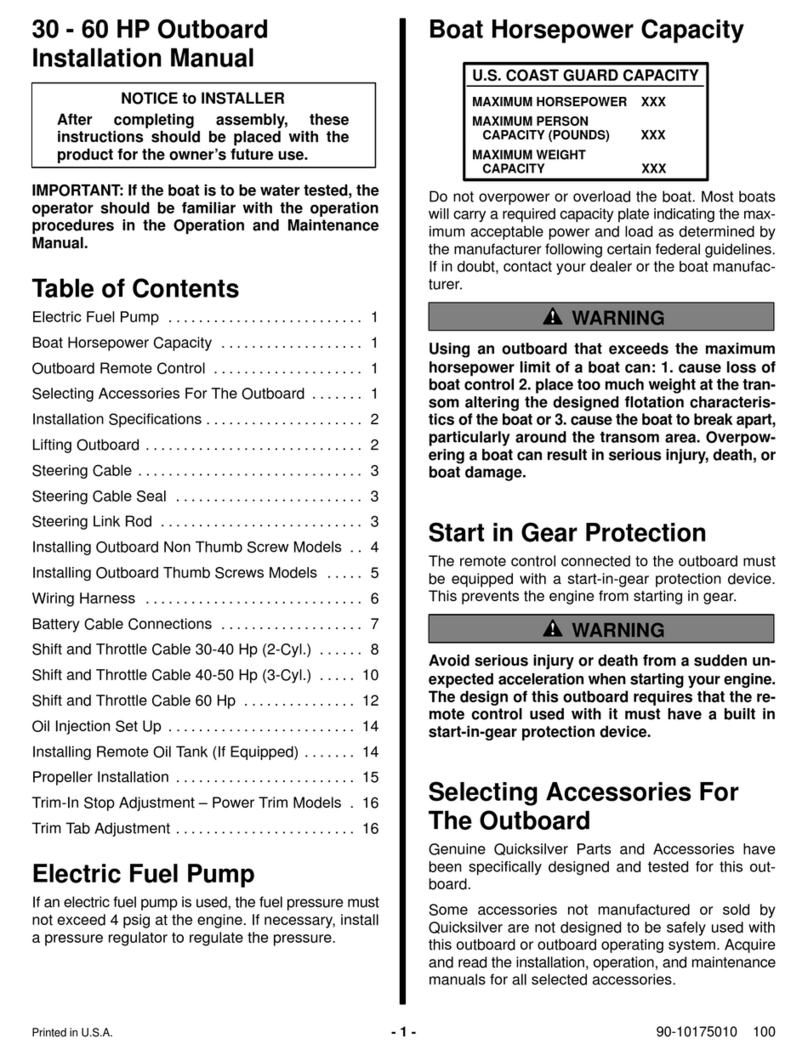
Table of contents
General information .......................... 1
Identification numbers record.......... 1
Outboard motor serial number .......... 1
Key number....................................... 1
EC label........................................... 1
Important labels............................... 2
Warning labels .................................. 2
Safety information............................. 3
Safety information ........................... 3
Rotating parts.................................... 3
Hot parts ........................................... 3
Electric shock.................................... 3
Engine shut-off cord.......................... 3
Gasoline............................................ 3
Gasoline exposure and spills ............ 3
Carbon monoxide.............................. 3
Modifications ..................................... 3
Boating safety ................................. 4
Alcohol and drugs ............................. 4
Personal flotation devices ................. 4
People in the water ........................... 4
Passengers ....................................... 4
Overloading....................................... 4
Avoid collisions ................................. 4
Weather ............................................ 5
Passenger training ............................ 5
Boating safety publications ............... 5
Laws and regulations ........................ 5
Basic requirements ........................... 6
Fueling instructions ......................... 6
Gasoline............................................ 6
Engine oil .......................................... 6
Installation requirements ................. 6
Boat horsepower rating..................... 6
Mounting motor ................................. 6
Remote control requirements............ 7
Battery requirement .......................... 7
Propeller selection ............................ 7
Start-in-gear protection ................... 8
Basic components ............................ 9
Main components............................ 9
Fuel tank ........................................... 9
Fuel joint ......................................... 10
Fuel gauge ...................................... 10
Fuel tank cap...................................10
Air vent screw..................................10
Remote control ................................ 10
Remote control lever ....................... 10
Neutral interlock trigger ................... 11
Neutral throttle lever........................ 11
Choke switch ................................... 11
Tiller handle..................................... 11
Gear shift lever................................ 12
Throttle grip ..................................... 12
Throttle indicator ............................. 12
Throttle friction adjuster...................12
Engine shut-off switch ..................... 13
Engine stop button .......................... 14
Choke knob for pull type .................14
Manual starter handle .....................14
Main switch ..................................... 14
Steering friction adjuster .................14
Trim tab with anode.........................15
Trim rod (tilt pin) .............................. 15
Shallow water lever ......................... 16
Tilt lock mechanism.........................16
Tilt support bar ................................ 16
Top cowling lock lever(s) (turn
type) .............................................. 16
2-pin connector ............................... 17
Battery charging information ........... 17
Warning indicator ............................ 17
Warning system ............................ 17
Overheat warning ............................ 17
Oil level warning and oil filter
clogging warning ........................... 18
Operation ......................................... 20
Installation..................................... 20
Mounting the outboard motor .......... 20
Clamping the outboard motor..........21
Breaking in engine ........................ 22
Gasoline and engine oil mixing
chart (50:1).................................... 22
Procedure for oil injection models ... 22
Pre-operation checks.................... 23
Fuel ................................................. 23
Oil .................................................... 23
Controls ........................................... 23
Stop switches .................................. 23
